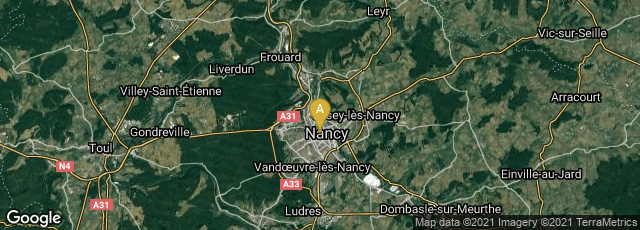In 1878 Oscar Berger-Levrault and J. Norberg issued a large quarto volume,
L'imprimerie Berger-Levrault et cie. Notice historìque sur le developpement et l'organisation de la maison, describing the history and growth of their printing and publishing business especially to illustrate and advertise their new state of the art production facility in Nancy after their prior facility was destroyed by fire in 1876. According to their finely produced book the firm originated in 1684.
The commemorative work begins with an unusual folding frontispiece showing their new factory, along with the palatial homes nearby of both of the owners. Of the commemorative volumes issued by printers and typefounders toward the end of the 19th century that I have collected, the Berger-Levrault volume stands out for its publication of useful statistics regarding the equipment and production of the business as it evolved over the years from 1855 to 1877. It is also remarkable for three exceptionally fine and detailed images of the production rooms--composition or typesetting, printing, and binding. Finally, the volume contains a remarkable well-labeled plan of the new facility showing how all the elements of book production were organized. Each of these features is illustrated with this database entry.
According to a 1976 book by Jean-Pierre Klein and Bernard Rolling the company remained in the printing business at least as late as 1976. When I wrote this entry in 2021 it appeared that
Berger-Levrault was a software company.